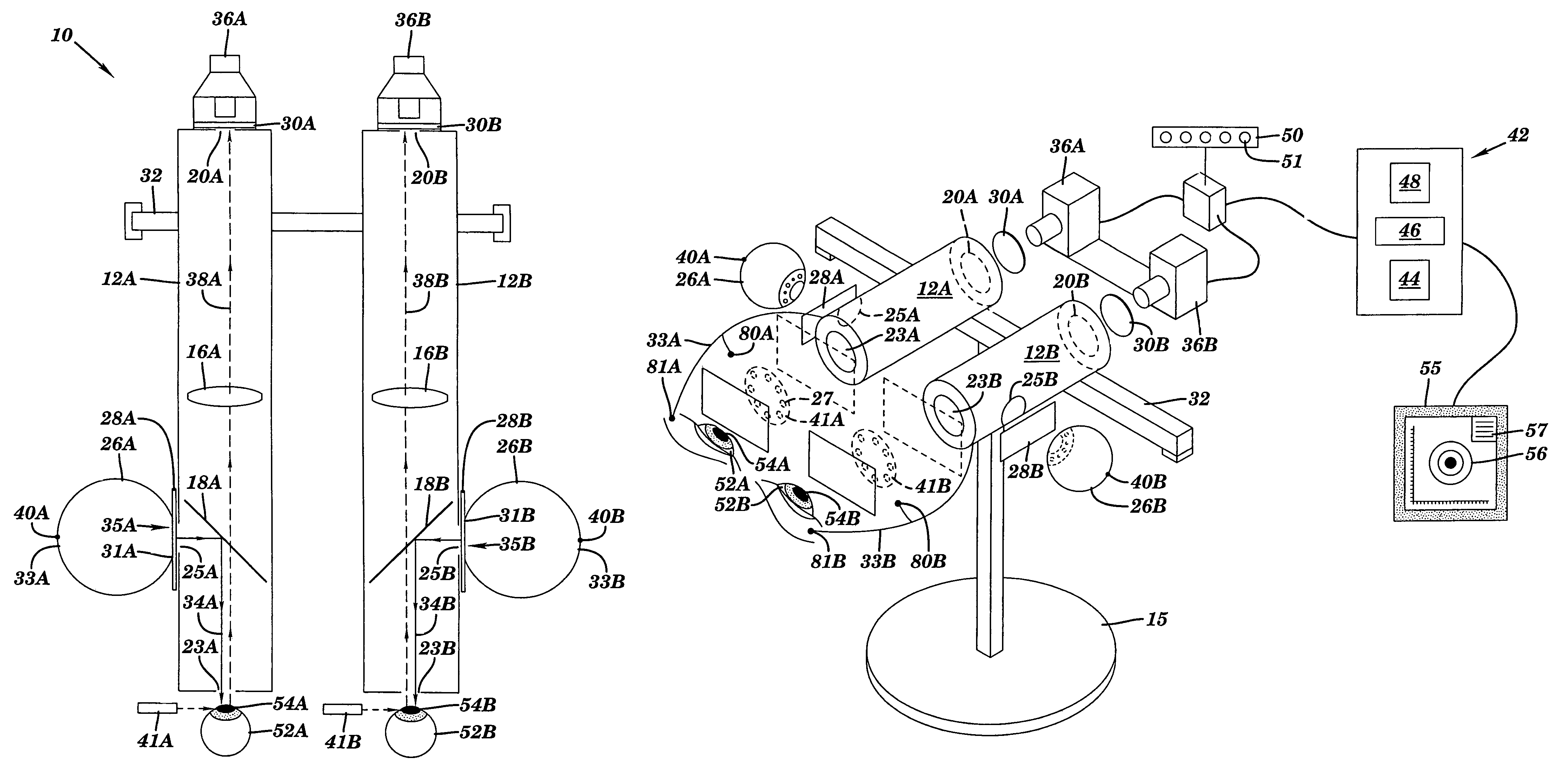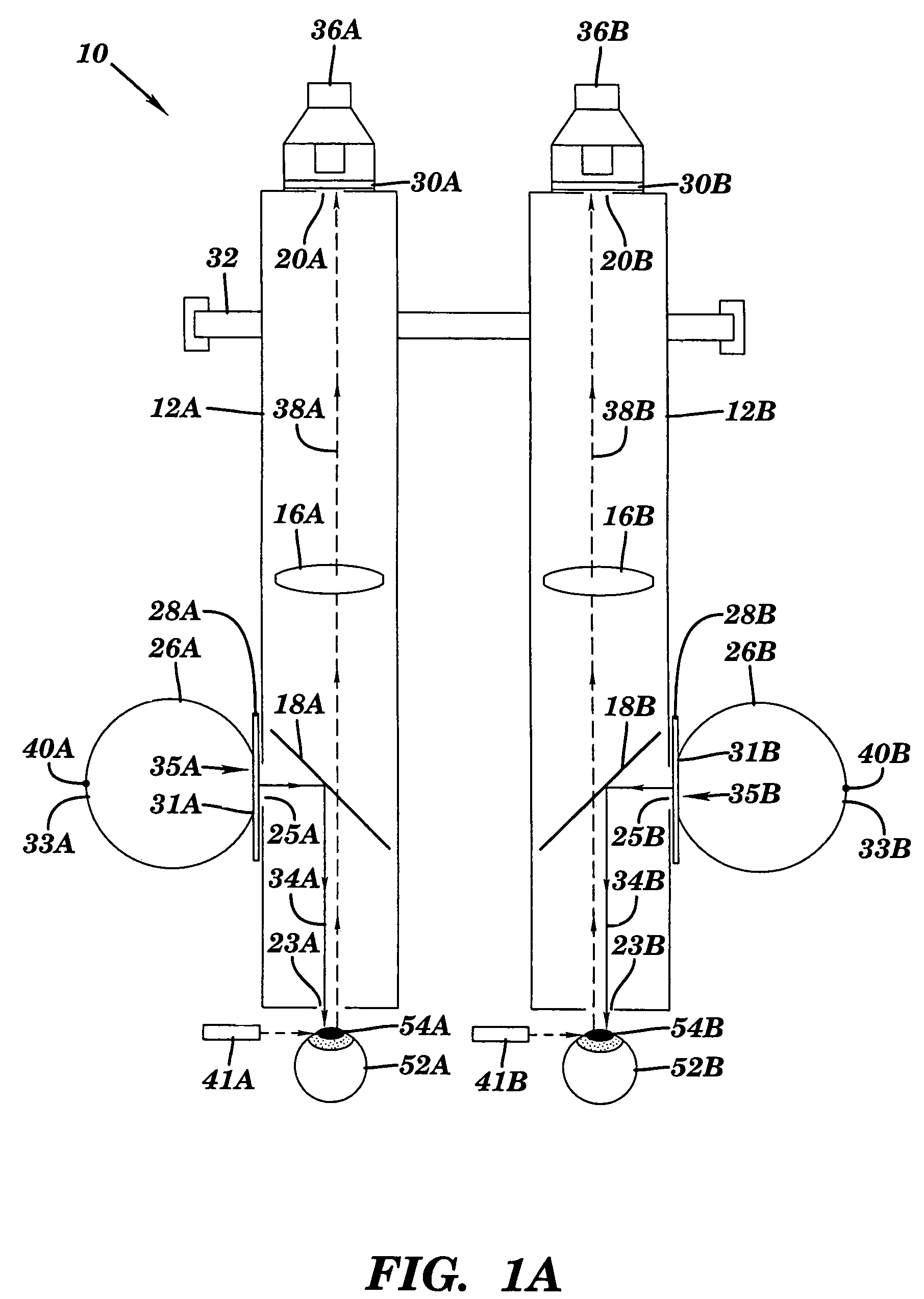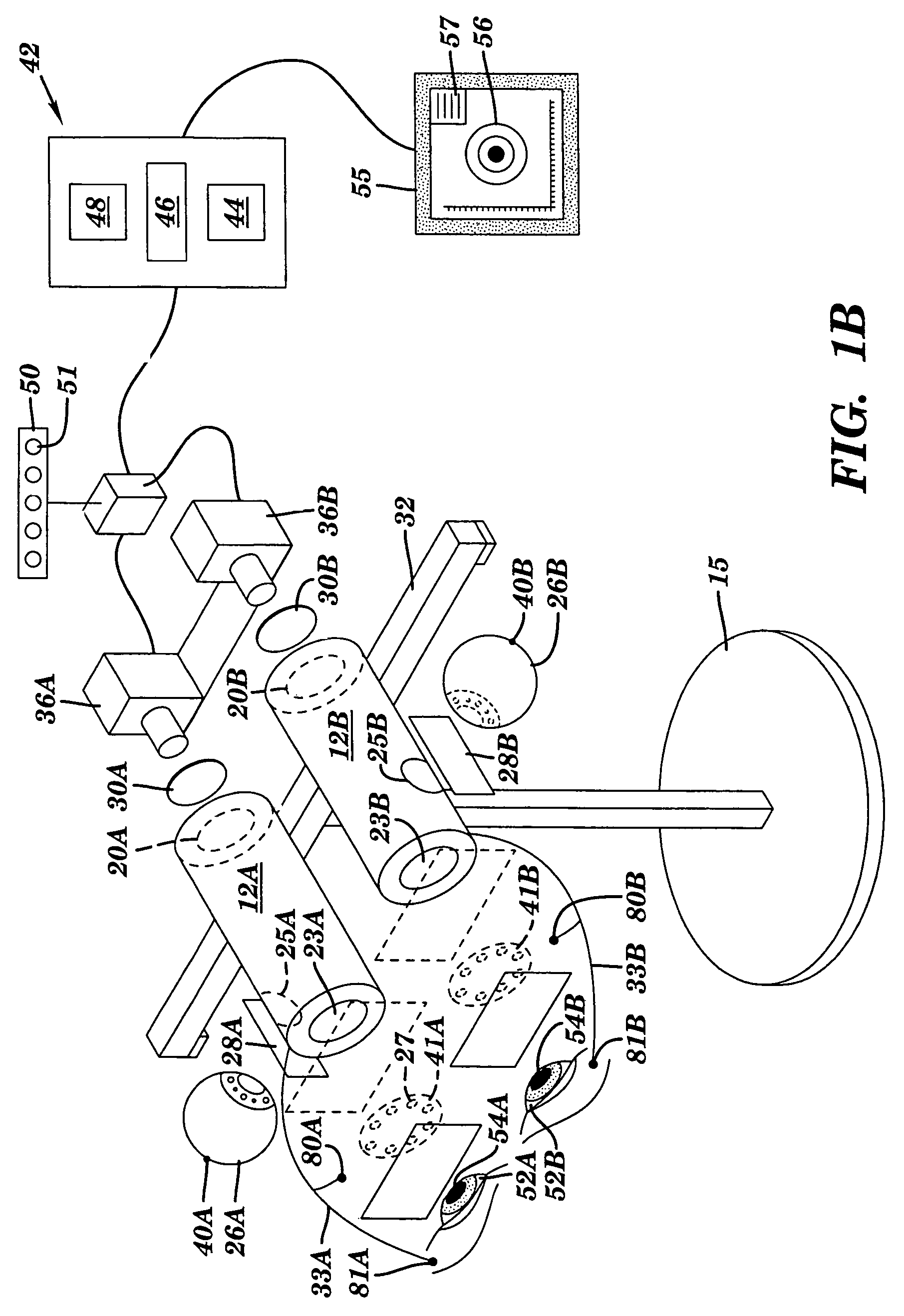Method, system and device for detecting ocular dysfunctions
a technology of ocular dysfunction and detection method, applied in the field of ocular dysfunction detection method, system and device, can solve the problems of lack of specificity for any one ocular disorder whether of neurological or transmissive origin, lack of sensitivity of sft, and significant error in judgemen
- Summary
- Abstract
- Description
- Claims
- Application Information
AI Technical Summary
Problems solved by technology
Method used
Image
Examples
Embodiment Construction
[0030]As stated above, the invention provides a method, system and device for obtaining data that can be used to detect an ocular dysfunction in a patient. In particular, a first eye is exposed to a series of flashes in which each flash varies chromatically from the other flashes in the series. Pupillary reflexes for both eyes are measured during the exposures. The pupillary reflexes can then be evaluated to determine if an ocular dysfunction is present. In one embodiment, both eyes are alternately exposed to the same series of flashes. Further, additional series of flashes that vary by location in the visual field and / or luminosity (i.e., brightness) can be incorporated and evaluated.
[0031]As a result, the invention can target different visual functions and cell populations by incorporating series of flashes that vary chromatically, luminosity, and / or by location in the visual field. Each flash comprises a beam of light having a short time duration. In one embodiment, each flash is...
PUM
 Login to View More
Login to View More Abstract
Description
Claims
Application Information
 Login to View More
Login to View More - R&D
- Intellectual Property
- Life Sciences
- Materials
- Tech Scout
- Unparalleled Data Quality
- Higher Quality Content
- 60% Fewer Hallucinations
Browse by: Latest US Patents, China's latest patents, Technical Efficacy Thesaurus, Application Domain, Technology Topic, Popular Technical Reports.
© 2025 PatSnap. All rights reserved.Legal|Privacy policy|Modern Slavery Act Transparency Statement|Sitemap|About US| Contact US: help@patsnap.com



